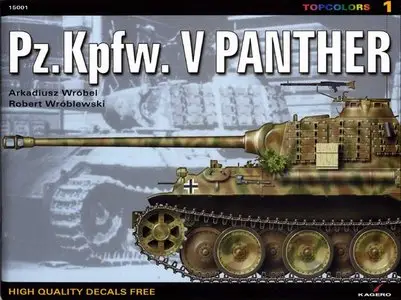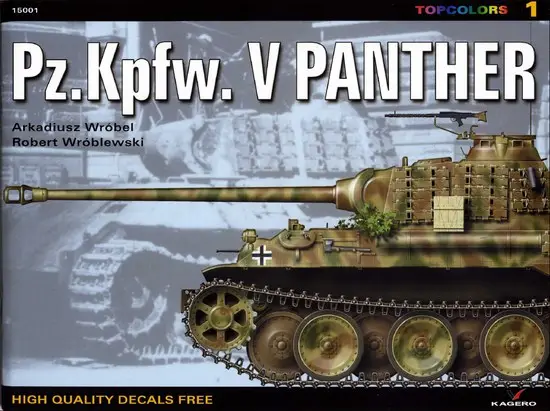Pz.Kpfw. V Panther (Topcolors 15001) By Arkadiusz & Wroblewski, Robert Wrobel
Publisher: Kagero 2007 | 51 Pages | ISBN: 8360445680 | PDF | 13 MB
Publisher: Kagero 2007 | 51 Pages | ISBN: 8360445680 | PDF | 13 MB
Painting schemes of Panther tanks, like any other German combat vehicles of WWII era, evolved with time and were specific to various theaters of operations. Nevertheless, they were consistent with norms and standards operative in the German Armed Forces. Obviously, there were exceptions to the rules. Those were usually caused by lack of suitable paints and multiple overpainting of a particular vehicle. A major change in the camouflage system of the German combat vehicles, which stemmed from frontline experiences, occurred in early 1943. It had been discovered that the commonly used dark gray color (Panzergrau) offered hardly any camouflage in open steppes of Russia. This fact led to mounting losses among the ranks of the Pan-zerwaffe. Following Army Communique (Heeresmittei-lung) HM 1943 No. 181, dated 18th February 1943, the dark gray was replaced by dark yellow (RAL 7028) as the base color for all German vehicles, supplemented by red brown (RAL 8017) and olive green (RAL 8002). The three colors served to create a great variety of painting schemes. Factory-fresh vehicles were supplied in the dark yellow factory base coat, to be painted at unit level with disruptive patterns of red brown and olive green according to regional and seasonal requirements. In winter most Panthers were painted with white distemper. Winter coatings differed, too. Some tanks were carefully camouflaged, whereas others only perfunctorily. In some cases only turrets were whitewashed. There were also more elaborate patterns in use, aimed at breaking up the outline of the vehicle.
NO PASSWORD
!!!No Mirrors below, please! Follow Rules!
!!!No Mirrors below, please! Follow Rules!



